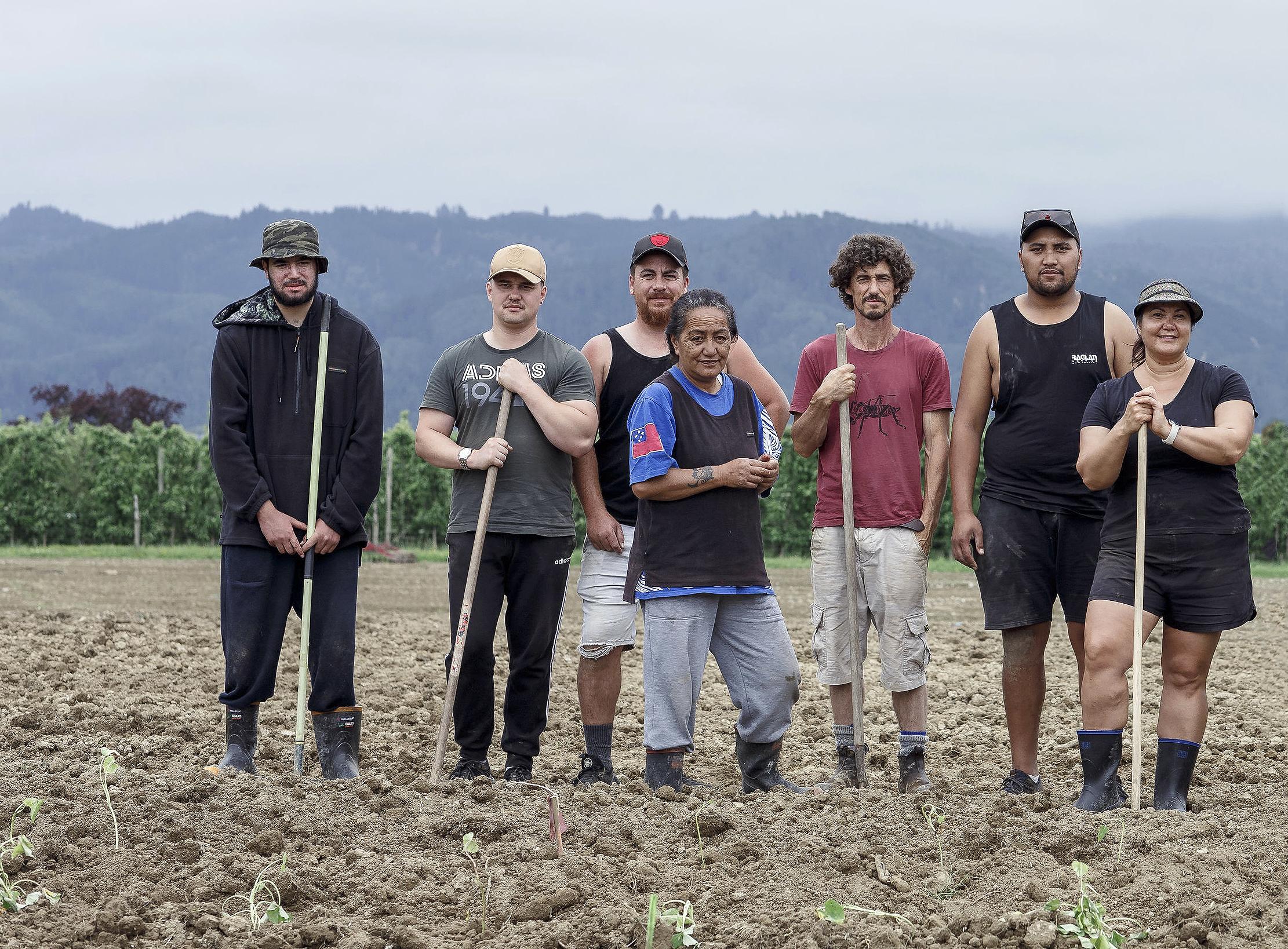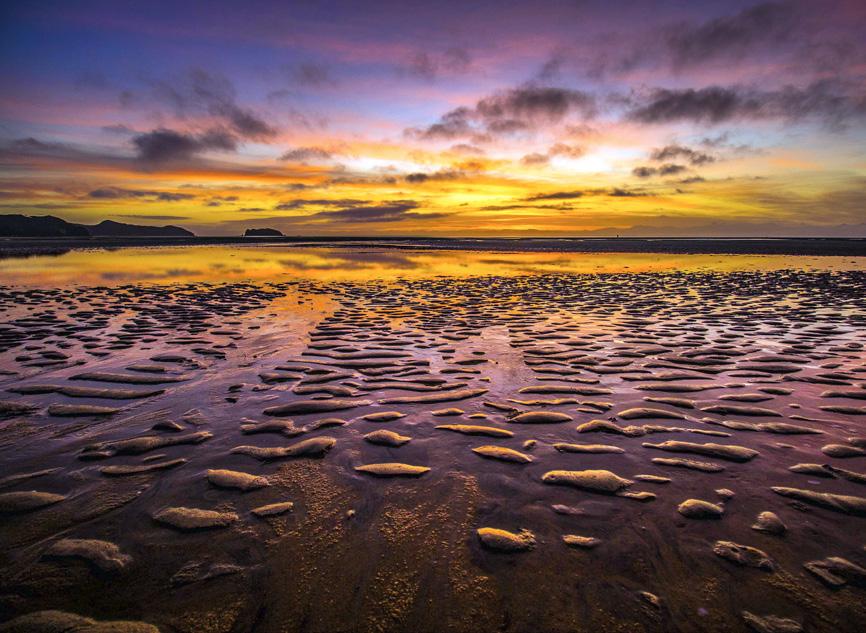
7 minute read
Making the Tenths' whole
– an update –
KERENSA JOHNSTON
The customary owners of the Nelson Tenths’ and Occupation Reserves descend from the original Māori land owners of western Te Tauihu (Whakatū/Nelson, Tasman and Mōhua/Golden Bay) as identified by the Native Land Court in 1893.
The families of the Nelson Tenths’ Reserves, which include the majority of Wakatū Owners, make up those whānau and hapū who settled Whakatū, Tasman and Mōhua and descend from four iwi: Ngāti Koata, Ngāti Rārua, Ngāti Tama, and Te Ātiawa.
Led by our kaumātua Rore Stafford, we are working towards the just and honourable return of land to the customary owners. This land is known as the Nelson Tenths’ and the Occupation Reserves and is located in the Nelson rohe.
HISTORY OF THE NELSON TENTHS’ RESERVES
When the New Zealand Company and the Crown established the Nelson settlement in the 1840s, an award (known as the Spain award, after Land Claims Commissioner William Spain) was issued. It stated that a tenth of all land to be used for the Nelson settlement, plus pā, wāhi tapu, urupā and cultivations owned by the whānau and hapū, would be reserved by the Crown by way of a Trust for the customary owners. This award was legally enforced by the Crown, by way of Crown Grant 1845. The reserved land area was to comprise 10 per cent of each of the ‘urban’ (1 acre), ‘suburban’ (50 acre) and ‘rural’ (150 acre) sections of the Nelson settlement – a total area of 15,100 acres plus pā, urupā, and cultivations. This was not done. The pā, wāhi tapu, urupā and cultivations were not protected. The rural sections were never reserved, although they were identified in places. Some land was reserved in the region and was held on trust for the benefit of the owners – this land comprises the corpus land of Wakatū Incorporation today. After 1845, the Crown removed many sections from the 5100 acres that had already been reserved for the benefit of the Trust. By 1850, the Nelson Tenths’ Reserves Trust comprised only 3953 acres, significantly less than what had been guaranteed by the Crown Grant 1845. Over the years, and while subject to Crown management via the Native Trustee and then Māori Trustee, more Tenths’ land was lost. When the land was finally handed back in 1977 to the customary owners to manage via Wakatū, the estate was just 1626 acres. Sites of special significance that have been lost include important mahinga kai such as the Nelson Queen’s Gardens, as well as urupā and other wāhi tapu, which are now recreational sites. Our whānau also lost land that would have generated significant income over this time, according to the terms of the Trust.
Kerensa Johnston. Photo: Kate MacPherson Rore Stafford. Photo: Kate MacPherson

SUPREME COURT CASE [2017]
In 2017, the Supreme Court recognised the Crown holds significant legal obligations to the customary owners of the Nelson Tenths’ Reserve, as the trustee of those lands. This decision was a significant win for the owners of the Tenths’ Reserves. Today, the descendants of those original tūpuna live throughout the world, and the majority of Wakatū whānau descend from the original land owners. As a result of decisions by former AttorneyGeneral Chris Finlayson, Wakatū was required to pursue litigation for breach of trust and fiduciary duty against the Crown, on behalf of the Māori land owners of the Tenths’ Reserves and Occupation Reserves. This has taken many years, as the case has made its way through the High Court and Court of Appeal, and finally to the Supreme Court, New Zealand’s highest court. In February 2017, the Supreme Court, by a majority of 4–1 judges, agreed with the customary owners. The Court found that the Crown has a fiduciary duty to the customary land owners of the Nelson Tenths’ Reserves and Occupation Reserves. The Crown had breached its fiduciary duties to ‘reserve one tenth of the 151,000 acres of land purchased by the New Zealand Company (15,100 acres) for the benefit of the Māori customary owners; and to exclude their pā, urupā and cultivations from the sale’. The Supreme Court decision has national and international significance in terms of its

Plan of the town of Nelson, New Zealand, approved by Frederick Tuckett, Chief Surveyor, 28 April 1842. M66 Reference MapColl 834.1953gbbd1842Acc.3045
advancement of legal rights for Māori and indigenous peoples, with respect to property rights. Following the decision, Minister David Parker asked respected kaumātua Rore Stafford, representing the customary owners, to submit a settlement proposal. It proposes:
• a three-phase negotiation, guided by values and principles • the appointment of negotiators, in order for both sides to resolve the issues honourably • the return of any land currently still held by the government, which should have been in the original trust.
We are still waiting to meet with the AttorneyGeneral to progress this settlement proposal and to decide on the next steps for the parties involved.
WHAT IS THE SOLUTION?
The return of all land within Nelson, Tasman and Mōhua, which ought to have been part of the Nelson Tenths’ Reserves Trust, is sought from the Crown. This will become a driver for future prosperity and development opportunities for the broader region and the customary owners – as was envisioned by the Trust and recognised by the Supreme Court. This long-standing matter needs to be resolved by the government in this current term. Our whānau are committed to resolving this matter constructively and would prefer to do so through an agreement with the Crown, rather than through further litigation. The customary owners’ expectation is that this Labour Government, which promises a new era in Māori–Crown relations and a guiding principle of

Whenua Matua, the Wakatū vineyard established on Tenths' Reserves land. Photo: Kate MacPherson
kindness, should be willing, proactive and positive about upholding its legal obligations to Māori. We have asked that the government act honourably and join us at the table to discuss and present a timely and proactive solution, as recognised by the Supreme Court. Following the Supreme Court decision in 2017, the Crown is not free to deal with the land it holds within the Nelson region as it sees fit. The Crown has tried to sell or alienate several blocks of land in Nelson during these last four years, and as a result, we have filed caveats against land held by the Crown and brought judicial review proceedings regarding the inaction of relevant ministers to protect the land as Trust property and to stop any further land losses while this matter is being resolved. In the meantime, we are seeking a moratorium on the sale of any more Crown-held land in the Nelson region.
WHAT IS THE NEXT STEP?
We want to take a constructive approach and reach an outcome that will deliver prosperity and mana for our whānau and region, in keeping with the original terms of the Nelson Tenths’ Reserves’ Trust, our intergenerational goals as set out in
Te Pae Tawhiti, the principles this government was elected on – and the aspirations of our tūpuna. We are planning to go to the High Court in late 2021, to work through the Crown’s breaches and the remedies that will need to be made available by the Court to address the breaches. One of these remedies will be the return of Trust land still held by the Crown, which belongs in the Nelson Tenths’ Trust. Rather than continue with the court proceedings, which are time consuming and can take a long time to resolve, we would prefer to work directly with the government, so that they can properly recognise their duty as trustee of the Nelson Tenths’ land, by returning the land they still hold within the Nelson rohe today. As the work progresses through the year, we will keep you up to date via our website, social media channels, wānanga and hui.










